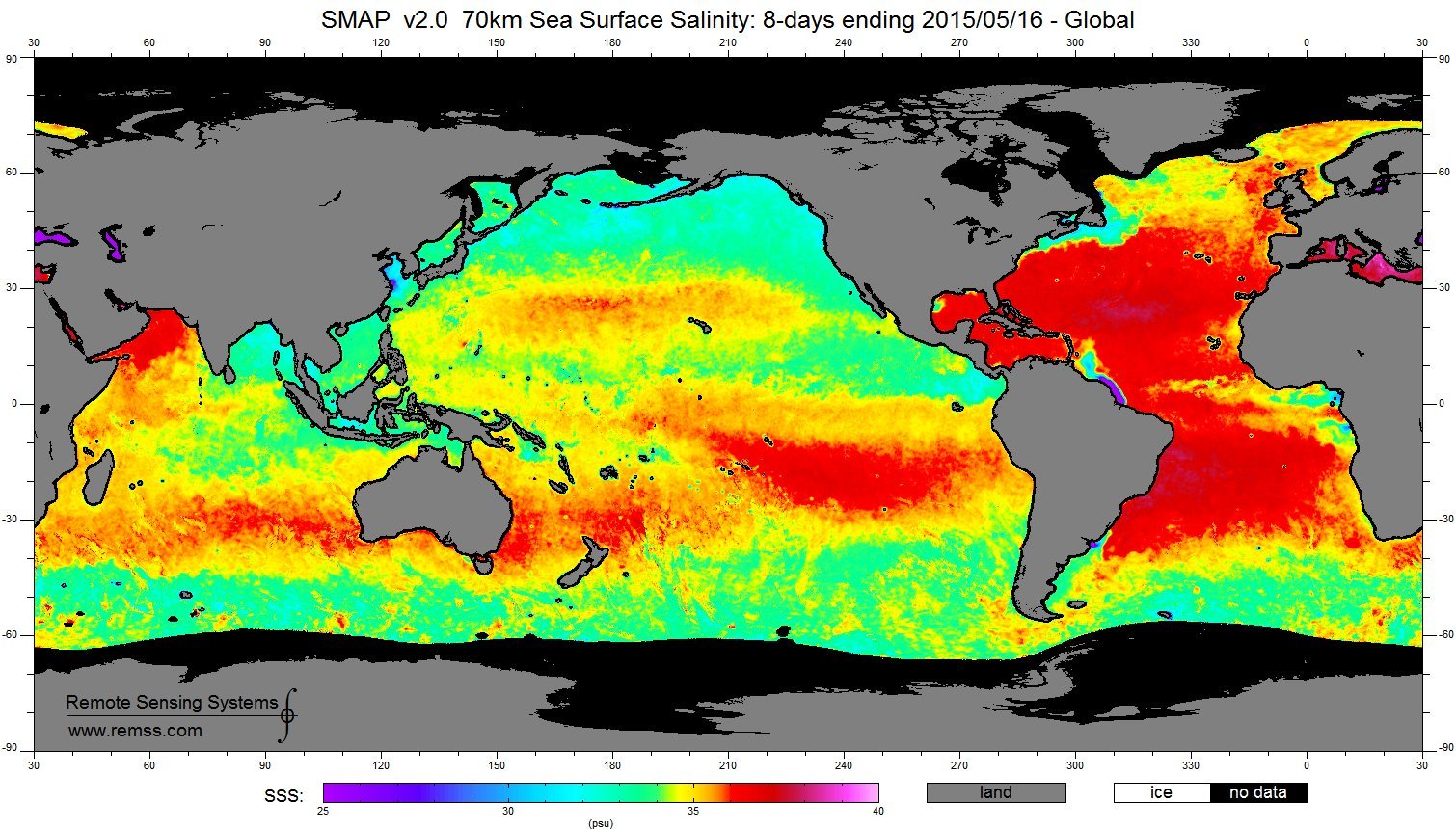News | April 26, 2018
SMAP Sees Sea Surface Salinity

New SMAP Sea Surface Salinity (SSS) 70km data from Remote Sensing Systems (RSS) is released and available for download at the NASA Physical Oceanography DAAC. Learn more: https://go.nasa.gov/2Jtzyde
The Physical Oceanography Distributed Active Archive Center announced the availability of updated version 2.0 SMAP Sea Surface Salinity (SSS) data from Remote Sensing Systems (RSS) at a spatial resolution of 70km.
As is the case for the 40-km resolution product, the 70-km product is resampled onto a 0.25° fixed Earth grid using a Backus-Gilbert type optimum interpolation (OI). In the case of the 70-km product, the target cell of the OI is a circular footprint with a diameter of 70 km. Compared to the 40-km product, the 70-km is spatially smoother and the random noise is reduced by 60%. For most oceanographic applications, it is recommended that the new 70-km product be used.
Data sets comprising this release include the Level 2C orbital data and two Level 3 mapped salinity products: an 8-day running mean product based on the repeat orbit of the SMAP mission, along with a monthly average product. All products are in the netCDF4 file format, and the L3 products are CF/ACDD metadata standards compliant. The formats of the 40km and 70 km products are the same.
The SMAP-SSS V2.0 70km data sets are described and discoverable via the PO.DAAC data portal. Access to these data is via PO.DAAC’s public FTP site ftp://podaac.jpl.nasa.gov/allData/smap/. The data are also accessible via a range of PO.DAAC tools and services: OPeNDAP, THREDDS, PODAAC-WS and LAS.
The SMAP Algorithm Theoreotical Basis Document (ATBD), validation analysis and file specification document together with other primary technical documentation, are available from the FTP site together with reader software. General information regarding the SMAP mission is available from the mission website and also via PO.DAAC’s SMAP and salinity webpages.
Should you have any questions, please contact podaac@podaac.jpl.nasa.gov




